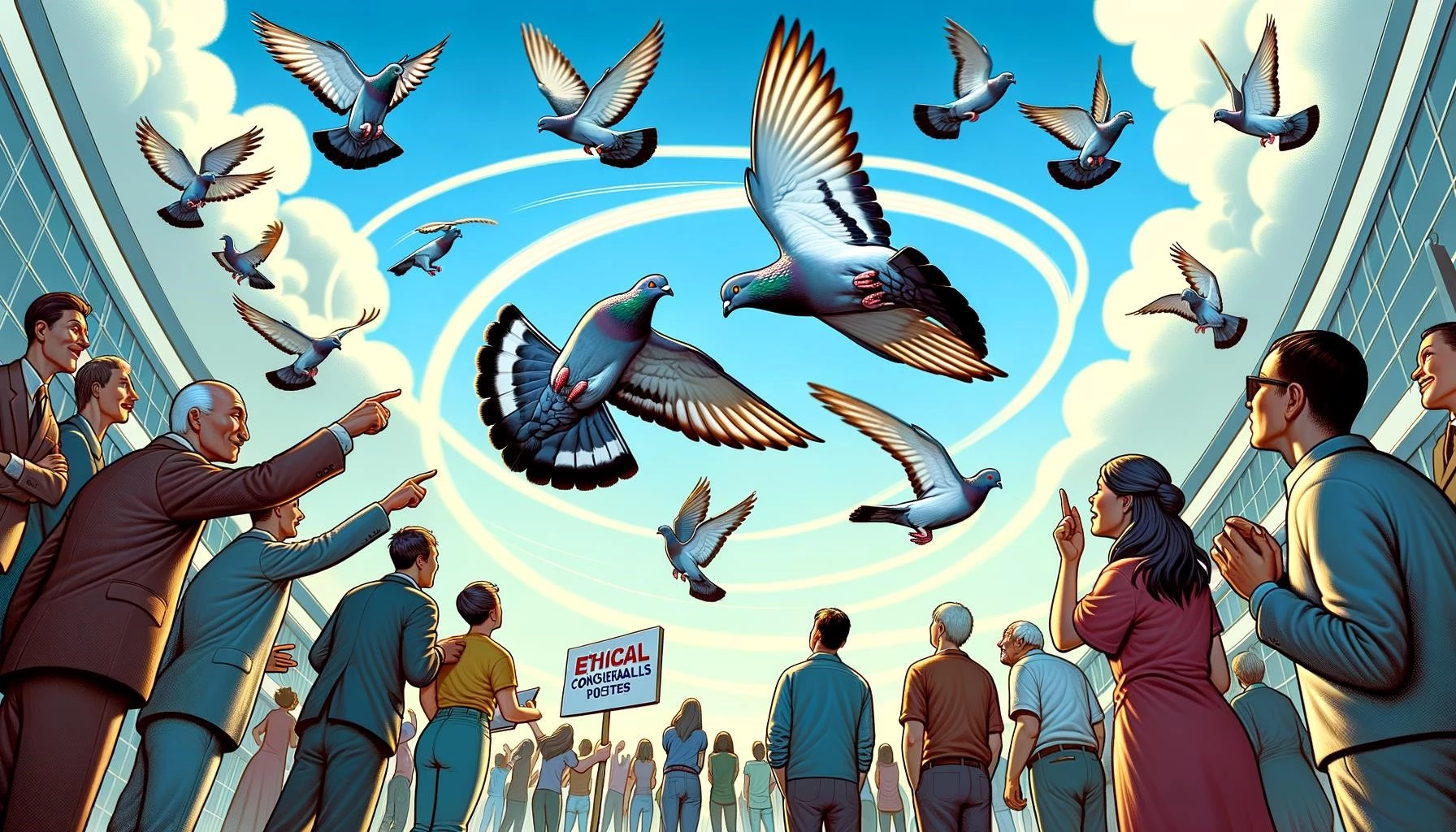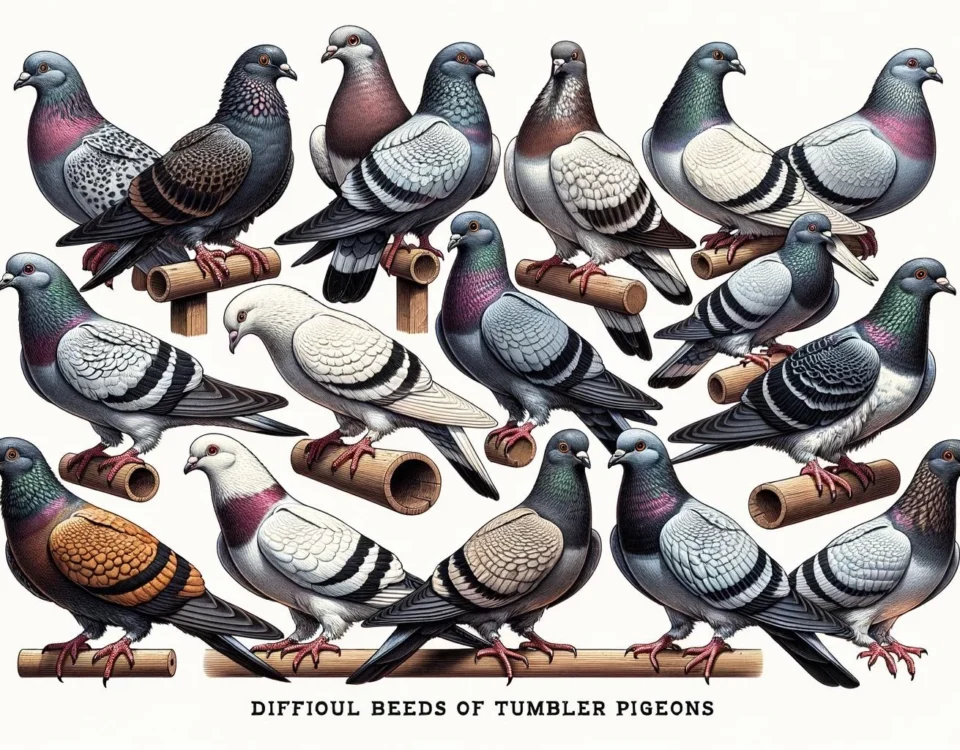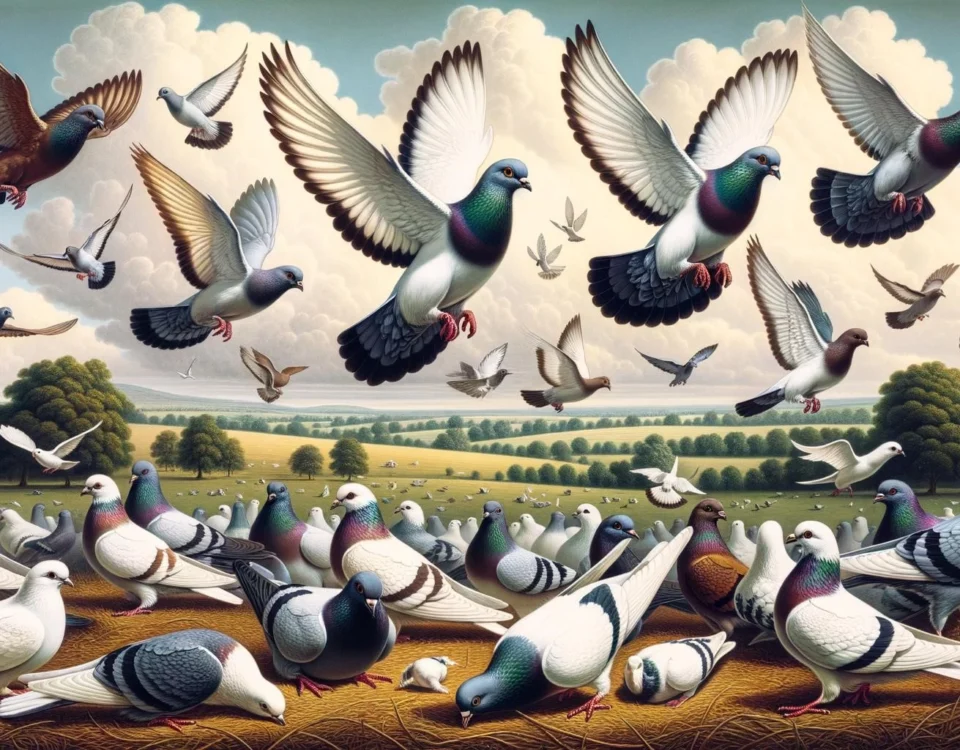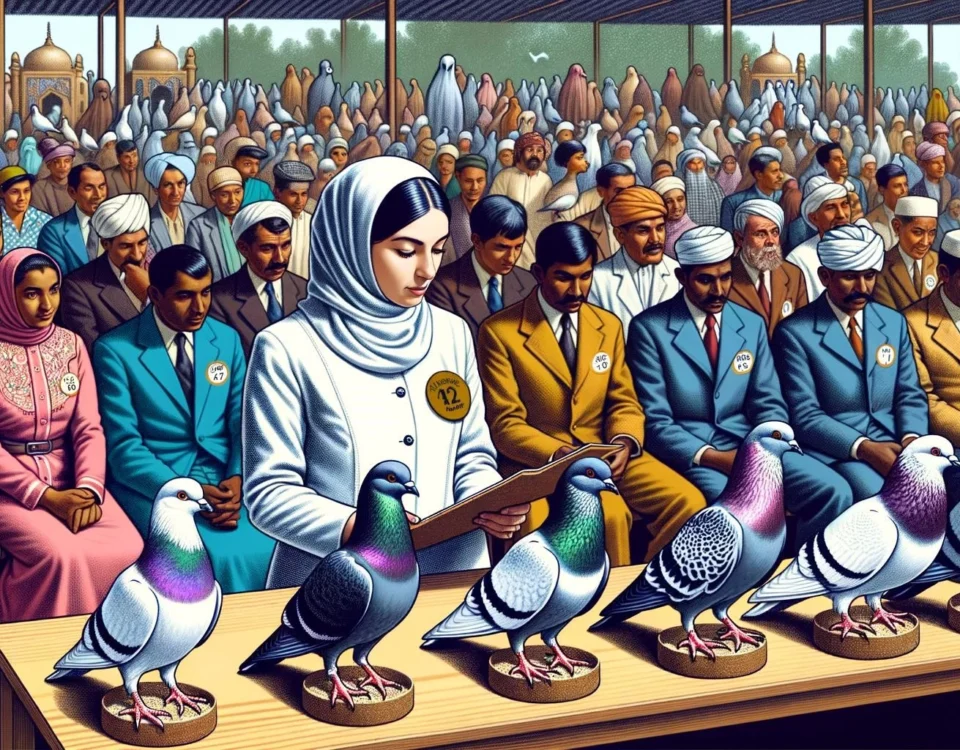Tumbler pigeons are a variety of domesticated pigeons that have been selectively bred for their ability to tumble or roll over during flight. These pigeons, descendants of the rock dove, exhibit intermittent episodes of tumbling and somersaulting backward while flying. They are known for their unique aerial acrobatics and have been bred for these traits.
Key Takeaways
- Tumbler pigeons are domesticated pigeons bred for their ability to tumble or roll over during flight.
- They are descendants of the rock dove and have been selectively bred for their unique aerial acrobatics.
- The tumbling behavior of these pigeons is a result of centuries of selective breeding.
- While tumbler pigeons exhibit impressive aerial maneuvers, there are ethical concerns surrounding their breeding and welfare.
Tumbler Pigeons and Aerial Acrobatics
Tumbler pigeons possess the ability to tumble or roll over during flight, making them unique among domesticated pigeons. This behavior is a result of centuries of selective breeding for specific flight characteristics. While most pigeons fly in a straight, stable manner, tumbler pigeons have been bred to display intermittent episodes of tumbling and somersaulting backward while in flight. The tumbling behavior is thought to be genetically influenced, and birds that exhibit multiple somersaults are called rollers.
Rollers and tumblers have different tumbling behaviors. Rollers lose altitude rapidly during their rolls and may roll until they strike the ground, regardless of their initial altitude. Tumblers, on the other hand, maintain their altitude relatively well during tumbling and exhibit controlled aerial maneuvers. This unique ability makes tumbler pigeons a fascinating sight to behold.
However, it is important to note that the tumbling behavior of pigeons is artificial and a result of selective breeding. In the wild, pigeons do not exhibit such acrobatic flight patterns. The breeding of tumbler pigeons for these traits raises ethical concerns, which will be further explored in the following sections.
Ethical Concerns and Welfare of Tumbler Pigeons
While tumbler pigeons may be admired for their aerial acrobatics, there are ethical concerns surrounding their breeding and welfare. The selective breeding for tumbling behavior has resulted in changes in brain morphology, with studies indicating that tumbler pigeons have smaller brains compared to non-tumblers. The effects of such brain morphology on the well-being and cognitive abilities of tumbler pigeons remain a subject of ongoing research.
Some argue that the breeding and perpetuation of these traits in tumbler pigeons is ethically questionable. Critics claim that the intentional selection for traits that hinder the bird’s ability to fly normally and engage in natural behaviors compromises their welfare. Tumbler pigeons may struggle with the basic tasks necessary for survival in the wild, such as escaping predators or searching for food. Additionally, keeping these birds in confined spaces may further restrict their ability to fly and exhibit natural behaviors.
It is essential for pigeon enthusiasts and breeders to prioritize the welfare and well-being of these birds. Providing spacious enclosures, opportunities for exercise, and a balanced diet can help mitigate some of the potential welfare concerns associated with tumbler pigeon breeding.
Conclusion
Tumbler pigeons are domesticated pigeons bred for their ability to tumble or roll over during flight. This unique behavior is a result of selective breeding and has resulted in changes in brain morphology. While tumbler pigeons showcase impressive aerial acrobatics, there are ethical concerns regarding their breeding and welfare. Prioritizing their well-being and providing suitable living conditions is crucial for the responsible ownership of these pigeons. Understanding the history and traits of tumbler pigeons allows for a more comprehensive appreciation of their unique place in the world of domesticated pigeons.









